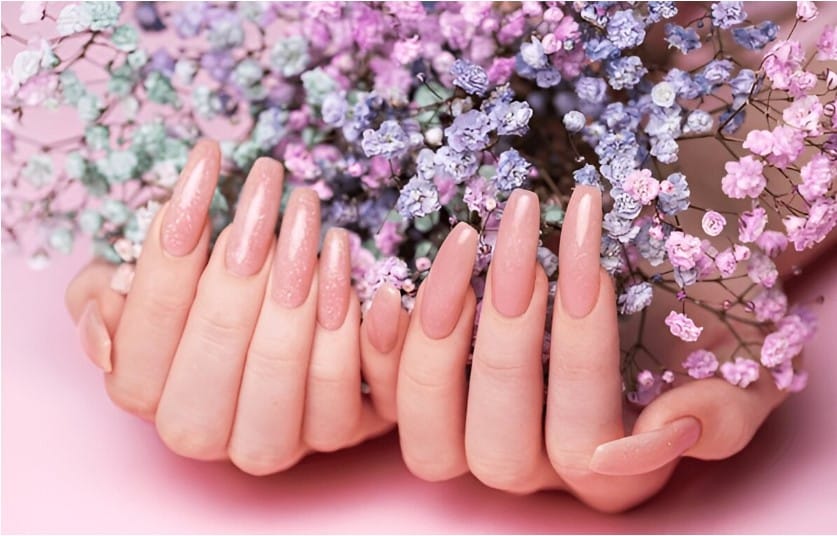Eco-Friendly Non-Toxic Options in Acrylic Nails
The allure of acrylic nails is undeniable. They offer versatility, style, and an effortless way to achieve that polished look. However, concerns about the chemicals involved in traditional acrylic nails have spurred a growing interest in eco-friendly and non-toxic alternatives. This article explores these options, delving into their benefits, application methods, and maintenance.
Key Takeaways
- Eco-friendly acrylic nails prioritize natural ingredients, reducing harmful chemical exposure.
- Non-toxic alternatives can provide similar durability and aesthetic appeal as traditional acrylics.
- Proper acrylic nails health and maintenance is essential to prolonging the lifespan of both eco-friendly and traditional options.
- Exploring various design ideas can enhance the appeal of eco-friendly acrylics.
- Understanding DIY acrylics nails removal techniques can empower you to maintain your nails safely at home.
Understanding Acrylic Nails

Acrylic nails are a popular choice for those seeking an instant makeover. Made from a mixture of liquid monomer and powder polymer, they create a durable coating over the natural nail. While they can enhance appearance and boost confidence, the chemicals used in conventional acrylics may raise health concerns, leading to a demand for greener alternatives.
The Shift to Eco-Friendly Options
In recent years, the beauty industry has seen a significant shift towards sustainability. Consumers are increasingly aware of the environmental impact of their beauty products. Eco-friendly acrylic nails use natural ingredients that minimize harmful effects on both the body and the environment. This movement emphasizes transparency, allowing users to make informed choices about their nail products.
Types of Eco-Friendly Acrylics
There are several brands on the market that offer eco-friendly or non-toxic acrylic nails. These products often use bio-based ingredients derived from plants, which are less likely to irritate the skin or cause allergic reactions. Some popular alternatives include:
- Water-based acrylics: These formulations use water as a base instead of harsh chemicals, providing a safer application experience.
- Vegan-friendly acrylics: These products are free from animal-derived ingredients and are often cruelty-free.
- Non-toxic gels: Gel alternatives can provide similar durability without the harmful chemicals found in traditional acrylics.
Benefits of Non-Toxic Acrylics
The benefits of opting for eco-friendly or non-toxic acrylic nails extend beyond environmental impact. Here are some advantages:
- Reduced Chemical Exposure: Non-toxic options significantly lower the risk of inhaling fumes or absorbing harmful substances through the skin.
- Better for Sensitive Skin: Individuals with sensitive skin or allergies may find these alternatives more suitable.
- Sustainability: Many eco-friendly products are packaged in recyclable materials, further reducing environmental impact.
- Long-lasting Results: With proper care, non-toxic acrylics can last just as long as traditional options.
The Application Process
Applying eco-friendly acrylic nails involves a process similar to traditional methods, but with a few key differences. Here’s a general overview of the application steps:
- Preparation: Begin by cleaning the natural nails, pushing back the cuticles, and gently buffing the surface.
- Primer Application: Use an eco-friendly primer to help the acrylic adhere better.
- Mixing the Acrylic: For those using a DIY acrylics nails removal method or at-home kits, mix the non-toxic powder and liquid according to the instructions provided.
- Application: Using a brush, apply the acrylic mixture onto the nails, shaping and sculpting as desired.
- Curing (if applicable): If using a gel-based eco-friendly product, cure under a UV or LED lamp.
- Finishing Touches: Buff and shape the nails for a smooth finish, and apply a topcoat for added shine.
Maintaining Your Acrylics
To ensure the longevity and appearance of your eco-friendly acrylic nails, regular acrylic nails health and maintenance is essential. Here are some tips:
- Avoid Excessive Moisture: Protect your nails from prolonged exposure to water, which can weaken the acrylic.
- Use Gentle Products: Opt for non-toxic nail care products and avoid harsh chemicals that can break down the acrylic.
- Regular Touch-Ups: Schedule regular appointments for fill-ins and checks to maintain the health of your natural nails beneath the acrylic.
Design Ideas for Eco-Friendly Acrylics
Just because you choose eco-friendly options doesn’t mean you have to compromise on style. Here are some trendy design ideas for your acrylic nails:
- Floral Patterns: Hand-painted or stamped flowers can add a touch of nature to your nails.
- Ombre Effects: Blend colors seamlessly for a gradient look that’s both chic and eye-catching.
- Geometric Designs: Use tape to create sharp lines and shapes in various colors for a modern twist.
- Matte Finishes: Opt for a matte topcoat for a sophisticated look that differs from the traditional glossy finish.
- Natural Elements: Incorporate dried flowers or leaves for an organic aesthetic that enhances your eco-friendly choice.
DIY Acrylic Nails Removal
When it’s time to remove your acrylics, it’s essential to do so carefully to avoid damaging your natural nails. Here’s a simple method for DIY acrylics nails removal:
- File the Surface: Gently file the top layer of the acrylic to break the seal.
- Soak in Acetone: Soak a cotton ball in acetone (or a non-toxic alternative) and place it on the nail, securing it with aluminum foil.
- Wait: Allow it to sit for 15-20 minutes to soften the acrylic.
- Remove: Gently push off the acrylic with a cuticle pusher.
- Care for Your Nails: Once removed, moisturize your nails and cuticles to promote recovery.
The Future of Acrylic Nails
As the demand for eco-friendly and non-toxic beauty products continues to grow, the future of acrylic nails looks promising. With innovations in formulations and increased awareness about health and safety, consumers can enjoy beautiful nails without compromising their values.
Conclusion
Choosing eco-friendly or non-toxic acrylic nails is a step towards sustainability without sacrificing style. With proper acrylic nails health and maintenance, you can enjoy the benefits of these innovative products while embracing a more responsible beauty routine.
FAQs
1. Are eco-friendly acrylic nails as durable as traditional ones?
Yes, many eco-friendly options provide similar durability when applied and maintained properly.
2. How can I find non-toxic acrylic nail products?
Look for brands that specifically label their products as eco-friendly or non-toxic. Reading reviews and ingredient lists can also help.
3. Can I apply eco-friendly acrylic nails at home?
Yes, many brands offer DIY kits that are easy to use at home, with clear instructions for application.
4. How often should I maintain my acrylics?
Regular maintenance every 2-3 weeks is recommended to ensure the health of your nails and the longevity of the acrylics.
5. What is the best way to remove eco-friendly acrylics?
Following a gentle removal process, as outlined above, will help protect your natural nails while effectively removing the acrylics.

